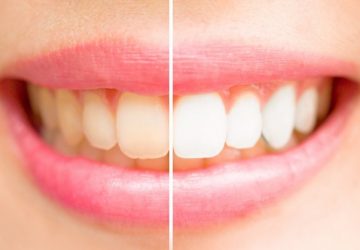Figure out How to Pick the Right Toothbrush for You

Cleaning your teeth is a necessary piece of everyday oral cleanliness. Be that as it may, with a plenty of choices accessible, picking the right toothbrush can be an overwhelming undertaking. In this aide, we'll walk you through key contemplations to guarantee you select the toothbrush great fit to your necessities.
67+ Virtuoso Tricks of the trade You'll Wish You Knew Sooner
Manual versus Electric: The primary significant choice includes picking either manual and oscillating brushes.
Manual Stars: Effectively open, financial plan agreeable, and doesn't need charging or batteries.
Manual Cons: Requires more work to accomplish powerful brushing and may not be as proficient in that frame of mind as oscillating brushes.
Electric Stars: Frequently more successful at cleaning teeth, especially for those with adroitness issues or supports.
Electric Cons: More costly at first, requires charging or batteries, and substitution heads can accumulate in cost.
Main concern: Your decision to a great extent relies upon individual inclination, spending plan, and explicit dental requirements.
Bristle Hardness: The firmness of the fibers assumes a critical part in powerful brushing.
Delicate Fibers: Most dental specialists suggest delicate seethed brushes as they are more averse to harm gums or dissolve tooth veneer.
Medium Fibers: Can be compelling however accompanied a higher gamble of gum harm whenever utilized with extreme power.
Hard Fibers: Not commonly suggested for everyday use, as they can cause gum downturn and wear out lacquer.
Thought: Those with touchy teeth or familiarities of lacquer disintegration ought to decide on extra-delicate fibers.
Substitution: Paying little mind to hardness, supplant your toothbrush each 3-4 months or when fibers show wear.
Head Size and Shape: The toothbrush head ought to easily fit in your mouth and arrive at all areas.
Grown-ups: A half-inch wide and one-inch tall head is generally ideal for grown-ups.
Youngsters: They require more modest heads custom-made to the size of their mouths.
Shape Varieties: Whether adjusted, rectangular, or tightened, pick a shape that feels good and arrives at every one of your teeth.
Proficiency: Certain individuals track down calculated or tightened heads more viable in arriving at molars and restricted spaces.
Individual Inclination: At last, the best brush is one you'll utilize routinely and accurately.
Handle Plan: A toothbrush's handle ought to be agreeable to hold and move.
Hold: Non-slip grasps can help, particularly in the event that you have joint pain or adroitness challenges.
Length: The handle ought to be long enough for you to hold easily and move effortlessly.
Adaptability: A few toothbrushes include adaptable necks, which can decrease how much tension applied during brushing.
Visual Allure: While it could sound shallow, a toothbrush plan you like can propel connynt use.
Electric Choices: Assuming you pick an oscillating brush, consider models with ergonomic deknowledges that fit serenely in your grasp.
Extra Highlights: Current toothbrushes accompany different elements that can upgrade the brushing experience.
Tongue Cleaners: A few brushes consolidate tongue cleaners on the rear of the head.
Marker Fibers: These change tone when now is the right time to supplant the toothbrush.
Inherent Clocks: Numerous oscillating brushes have clocks to guarantee you brush for the dental specialist suggested two minutes.
Pressure Sensors: A few electric models alert you in the event that you're concentrating a lot of tension.
Modes and Settings: Better quality oscillating brushes offer various modes, similar to delicate, brightening, or gum care.
Picking the right toothbrush is a fundamental stage in keeping up with oral wellbeing. Whether manual or electric, the great toothbrush for you is one that you'll utilize connyntly and really. As dental necessities change over the long haul, make it a point to assess your decision and counsel your dental specialist for proposals.
67+ Virtuoso Tricks of the trade You'll Wish You Knew Sooner
Manual versus Electric: The primary significant choice includes picking either manual and oscillating brushes.
Manual Stars: Effectively open, financial plan agreeable, and doesn't need charging or batteries.
Manual Cons: Requires more work to accomplish powerful brushing and may not be as proficient in that frame of mind as oscillating brushes.
Electric Stars: Frequently more successful at cleaning teeth, especially for those with adroitness issues or supports.
Electric Cons: More costly at first, requires charging or batteries, and substitution heads can accumulate in cost.
Main concern: Your decision to a great extent relies upon individual inclination, spending plan, and explicit dental requirements.
Bristle Hardness: The firmness of the fibers assumes a critical part in powerful brushing.
Delicate Fibers: Most dental specialists suggest delicate seethed brushes as they are more averse to harm gums or dissolve tooth veneer.
Medium Fibers: Can be compelling however accompanied a higher gamble of gum harm whenever utilized with extreme power.
Hard Fibers: Not commonly suggested for everyday use, as they can cause gum downturn and wear out lacquer.
Thought: Those with touchy teeth or familiarities of lacquer disintegration ought to decide on extra-delicate fibers.
Substitution: Paying little mind to hardness, supplant your toothbrush each 3-4 months or when fibers show wear.
Head Size and Shape: The toothbrush head ought to easily fit in your mouth and arrive at all areas.
Grown-ups: A half-inch wide and one-inch tall head is generally ideal for grown-ups.
Youngsters: They require more modest heads custom-made to the size of their mouths.
Shape Varieties: Whether adjusted, rectangular, or tightened, pick a shape that feels good and arrives at every one of your teeth.
Proficiency: Certain individuals track down calculated or tightened heads more viable in arriving at molars and restricted spaces.
Individual Inclination: At last, the best brush is one you'll utilize routinely and accurately.
Handle Plan: A toothbrush's handle ought to be agreeable to hold and move.
Hold: Non-slip grasps can help, particularly in the event that you have joint pain or adroitness challenges.
Length: The handle ought to be long enough for you to hold easily and move effortlessly.
Adaptability: A few toothbrushes include adaptable necks, which can decrease how much tension applied during brushing.
Visual Allure: While it could sound shallow, a toothbrush plan you like can propel connynt use.
Electric Choices: Assuming you pick an oscillating brush, consider models with ergonomic deknowledges that fit serenely in your grasp.
Extra Highlights: Current toothbrushes accompany different elements that can upgrade the brushing experience.
Tongue Cleaners: A few brushes consolidate tongue cleaners on the rear of the head.
Marker Fibers: These change tone when now is the right time to supplant the toothbrush.
Inherent Clocks: Numerous oscillating brushes have clocks to guarantee you brush for the dental specialist suggested two minutes.
Pressure Sensors: A few electric models alert you in the event that you're concentrating a lot of tension.
Modes and Settings: Better quality oscillating brushes offer various modes, similar to delicate, brightening, or gum care.
Picking the right toothbrush is a fundamental stage in keeping up with oral wellbeing. Whether manual or electric, the great toothbrush for you is one that you'll utilize connyntly and really. As dental necessities change over the long haul, make it a point to assess your decision and counsel your dental specialist for proposals.
Share this article
 Cruising Solo All over the Planet: An Excursion of Self-Disclosure
Cruising Solo All over the Planet: An Excursion of Self-Disclosure Real time features for Films and Programs
Real time features for Films and Programs Vote in favor of the field action that revives your psyche and soul!
Vote in favor of the field action that revives your psyche and soul! 2024's Hot Games: Must-Play Titles of the Year
2024's Hot Games: Must-Play Titles of the Year Most loved Real time feature: Which Stage Do You Like
Most loved Real time feature: Which Stage Do You Like Instructions to Choose the Best Web based Advertising Degree Program for Your Objectives
Instructions to Choose the Best Web based Advertising Degree Program for Your Objectives Home Machine Basics: An Exhaustive Purchasing Guide
Home Machine Basics: An Exhaustive Purchasing Guide Excelling at Cash The board: A Manual for Monetary Essentials
Excelling at Cash The board: A Manual for Monetary Essentials A Manual for Well known Western television Series
A Manual for Well known Western television Series













